TureMetal Builds a Fanless 32-Core EPYC PC with an RTX 2070
by Anton Shilov on December 30, 2019 8:00 AM EST- Posted in
- Cases/Cooling/PSUs
- Fanless
- EPYC
- GeForce RTX
- Rome
- TureMetal
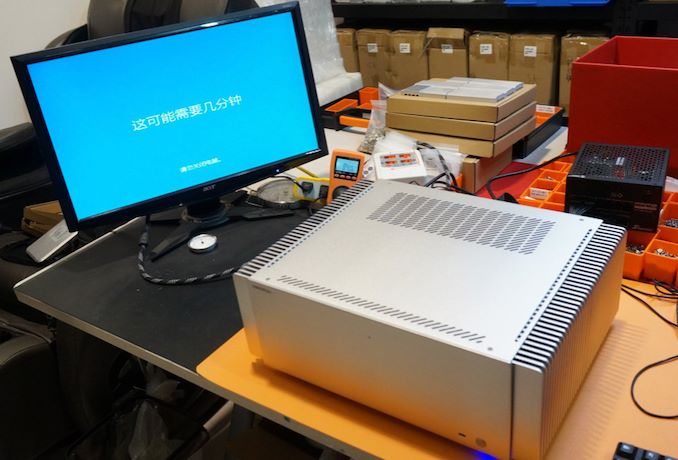
Turemetal, a maker of cases for fanless PCs, has published photos of a passively cooled system featuring an AMD EPYC processor and an NVIDIA GeForce RTX 2070 graphics card. The computer uses numerous custom components, with the founder of TureMetal stating that this is a custom build for a specific customer, although it uses one of their standard fanless PC cases.
The fanless system built by Turemetal is powered by AMD’s 32-core EPYC 7551 processor, listed as having a 180 W TDP, and GIGABYTE’s NVIDIA GeForce RTX 2070 video card with a 175 W TDP (355W total). These are both equipped into a Supermicro ATX motherboard, and then built inside a commercially available Turemetal UP10 chassis.
Officially the chassis supports a 140 W CPU and a 160 W GPU (300W total), but it looks like its actual capabilities are more impressive, and with a bit of tweaking it can house a rather extreme 32-core processor and a high-end graphics board.
At this time, according to Turemetal's YouTube channel, the system has passed FurMark's full-load test for CPU and GPU for 22 continuous hours without a crash or thermally throttling. In the video, we see a GPU temperature of 88C, and a CPU temperature of 76C, in a 24C ambient room.
Since the Turemetal UP10 was not designed for AMD’s EPYC processors, in order to meet the demands of the customer Turemetal had to build a custom copper heat spreader for the processor along with an appropriate mounting mechanism. The radiator weighs nearly 2.5 kilograms, so we are literally talking about heavy metal here. The test system currently uses an external PSU, but Turemetal says that eventually power supply will be moved inside the PC.
It remains to be seen when and whether the UP10 chassis with AMD EPYC 7551 support will be available commercially - if the custom block will be an 'add-on', or limited to specific customer requests. Meanwhile, good news is that some of Turemetal’s products are now available not only directly from Taobao, but also from Fully Silent PCs in the US and will soon be available in Europe shortly, reports FanlessTech.
Related Reading:
- A Super Fanless Chassis from TureMetal: For DIY & 0 db Workstations
- Noctua Concept Fanless CPU Cooler: Up to 120W Of Cooling Performance
- Compulab Launches Airtop3: A Fanless PC with Core i9-9900K & Quadro RTX 4000
- Streacom DA2 Fanless: The All-Aluminum Silent Chassis
Source: Turemetal/Twitter, FanlessTech


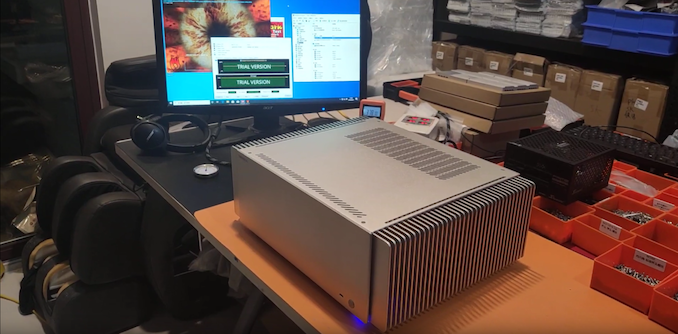
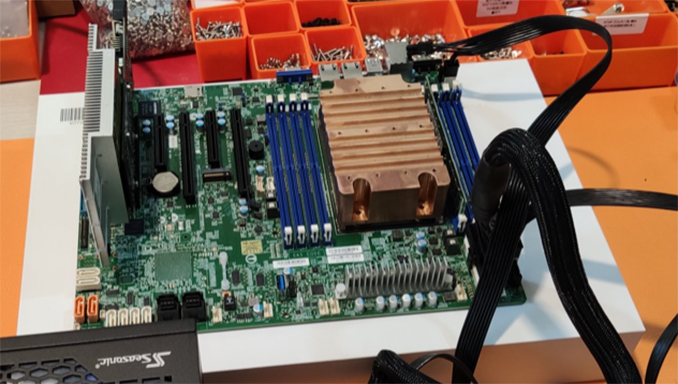

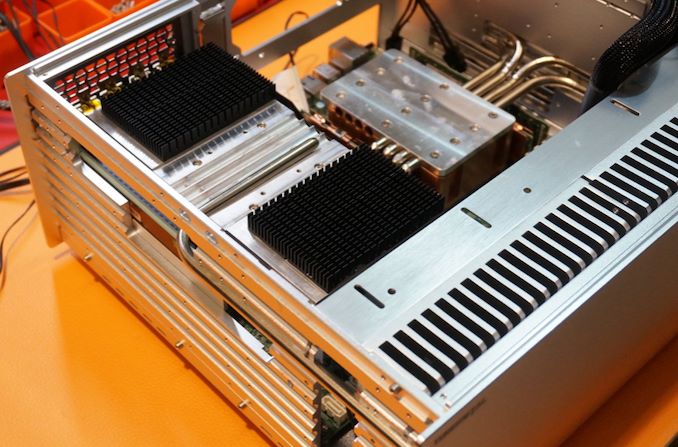
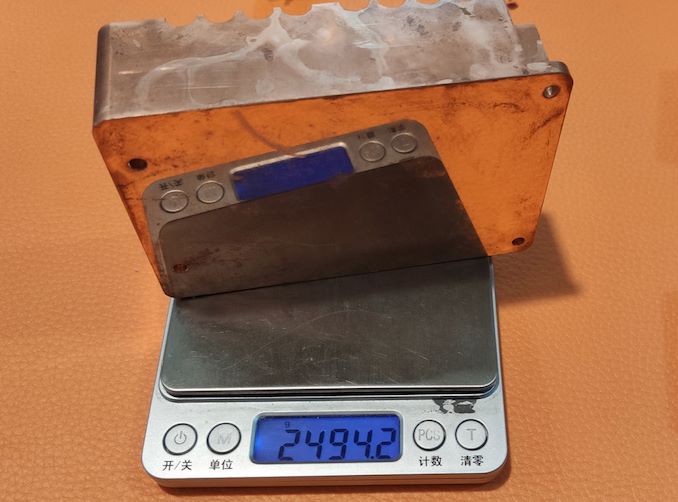
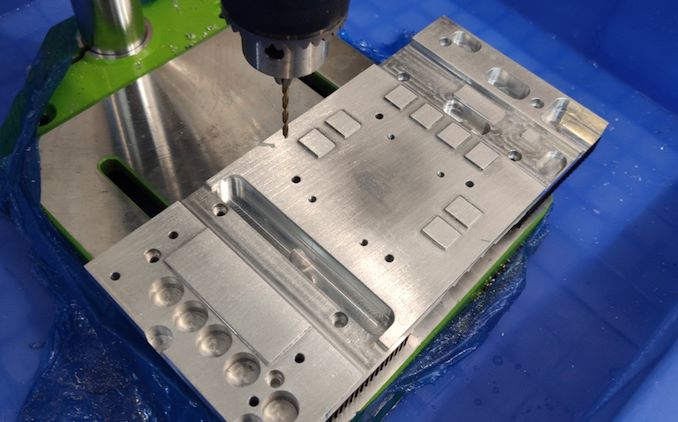
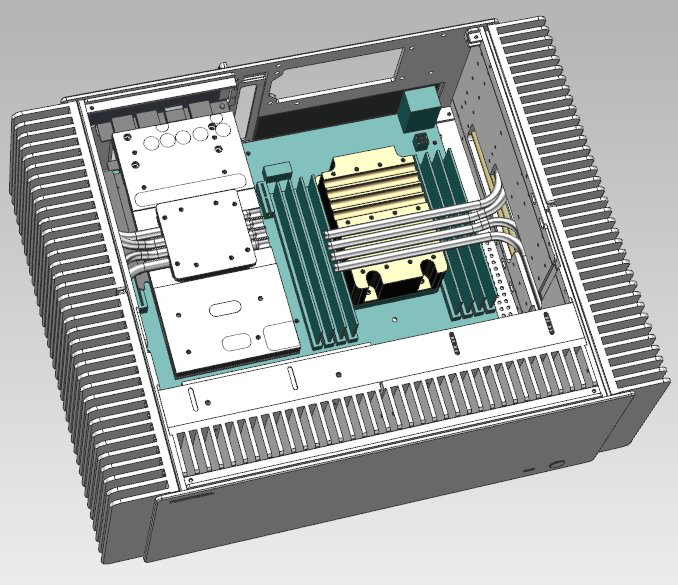











25 Comments
View All Comments
FreckledTrout - Monday, December 30, 2019 - link
Pretty cool. Didn't know this existed.Pyxar - Wednesday, December 23, 2020 - link
Me either, i'll be checking them out!Operandi - Monday, December 30, 2019 - link
Streacom make some similar passively cooled cases, though nothing quite to the same extent so this is pretty impressive.The one thing that concerns me with all these passive designs and especially when you get to this level cooling of the VRM components so hopefully thats being accounted for here.
HollyDOL - Monday, December 30, 2019 - link
Looking on the gpu block detail (the 2nd photo from bottom) it seems the answer is yes.ProDigit - Monday, December 30, 2019 - link
The GPU temps are way too hot.My fanned versions run between 45 and 55c.
Then again, with some tweaking, he could run the GPU 35W lower, with a mild overclock, and still gain the same performance (as Nvidia drivers ramp up the clock speed the colder the temps get).
Death666Angel - Monday, December 30, 2019 - link
"The GPU temps are way too hot." No.Flunk - Monday, December 30, 2019 - link
GPUs are fine as long as sustained load temp is below about 90 (I have a lot of experience with this). You can't compare totally silent cooling to fans, it's amazing they got this working at all.igavus - Monday, December 30, 2019 - link
The point of this passive system is silence, yes? Then if a fan cooled system is equally silent ( measured from the typical listening distance ) then the two can and should be compared. I've gone down the rabbit hole of passive systems and have learned it the expensive way that it's pointless to optimize above ambient noise. Yes, in theory it's better not to contribute to the ambient noise. In practice, if you cannot measure it - let alone hear it, you're better off not making the compromises required to get there. Effectively silent is better than silent ;-)Death666Angel - Monday, December 30, 2019 - link
"The point of this passive system is silence, yes?" Sometimes. But in industrial environments, the point of a passive system can be no moving parts and no dust ingress points. If all you want is an HTPC and you want it to be very quiet to not ruin your movie watching experience, one or two slow moving fans and large heatsinks might be a better (and cheaper) bet, especially if you maintain the thing every once in a while (remove dust from filters and heatsinks etc.).Samus - Monday, December 30, 2019 - link
The point of passive systems are not just silence. Durability is a key feature to systems with no moving parts or need for ventilation. I install kiosk PC's in plants for CAD/CAM manufacturing all the way down to simple shipping PC's at loading docks. These are filthy areas exposed to elements. Salt in the air from the ocean nearby and basic debris wreak havoc on PC's with any airflow.